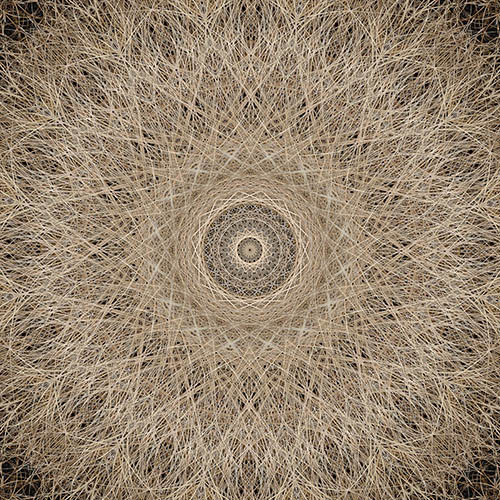

This spring I explored even more intracate radial designs using dried Bermuda Grass found in my yard in March before the new browth began. Mirroring, copying, rotating, layering the initial image allow simple beginnings to become quite complex. Radial symmetry design forms the organizing principle in ancient Buddhist and Hindu mandalas, which have spiritual significance. The Sanskrit word mandala means “that which encircles a center.” The Romans echo the concept in the oculus of the Pantheon, and this symmetry is also found in medieval Christian art, such as the spectacular rose windows at Chartres, Notre Dame, and Strasbourg cathedrals and the illuminations of the 12th century mystic Hildegard von Bingen. The 20th-century psychoanalyst Carl Jung saw the mandala as “a representation of the unconscious self.” As a professor of photography, design, and pottery, I teach my students to order two- and three-dimensional space with an appreciation of this ancient understanding. I have always been drawn to a formalist approach to my image making. The visible world serves as a means to explore the language of ordered space. I find working with reflection symmetries to be immensely satisfying. The simple act of centering and finding the center is the unifying principle tying together the varied media that I teach |